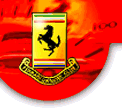  
|
The 360 Challenge Examined
The 360 Modena Challenge, the racing version of the new model, has been designed for the customer who wants to race in the Ferrari Challenge Trofeo Pirelli - an international race series that was introduced in 1993 with the 348 and continued from 1995 with the F355. Based on the innovative properties of the 360 Modena design, the object of the Challenge version was to significantly improve the racing equipment available to customers who are enthusiastic about motor racing, as well as produce a noticeable improvement in the performance level compared with the previous F355 Challenge.
The sophisticated features of the Challenge version of the 360 Modena include:
The F1-gearbox, which is used on the Challenge for the first time and is the only transmission offered.
Reduced weight of 1170 kg (without fuel), which when compared with the F355 Challenge shows a weight saving of 150 kg. This has been achieved by utilising the basic design of the 360 Modena (the chassis and the body are made completely of aluminium) and is further optimised by some significant measures to reduce weight.
The fuel tank is designed in accordance with the FIA-standards, but has a capacity of 100 litres and two filler pipes for fast fuelling.
The properties and the performance of the engine are identical to that of the road version of the 360 Modena: an eight cylinder engine with 90o-V angle, swept volume of 3586 cc with maximum power of 400 PS.
The 360 Modena Challenge is equipped with some other important features such as special Brembo brakes, BBS wheel rims with P Zero slick Pirelli tyres, while the safety aspects include a special racing seat with a six-point harness, an FIA roll-cage, as well as an automatic fire extinguisher and a Magneti Marelli digital instrument with data capture system.
The interior is characterised by the simplicity that is typical of motor racing equipment: a three-spoke sports steering wheel, use of black material for the central instrument panel, and internal door trims as well as the dashboard and the restricted material covering on the control panel housing positioned on the back of the seat.
Click here to return to the Ferrari Happenings page.
|
|||
|
|





